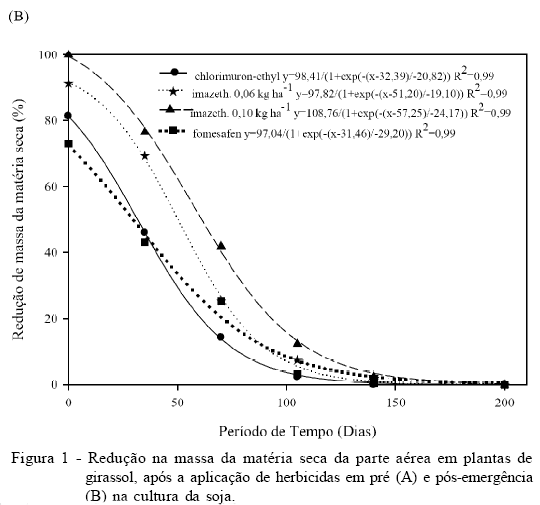The sunflower is a oilseed crop kind of prominence before the cultures used in succession in the Brazil. However, little information concerning the effects of residual activity of herbicides on the crop in this region are known. The aim of this study was to evaluate the residual activity of herbicides in weed management in pre and post-emergence soybean and evaluate its effects on sunflower crop in succession. In field experiments we adopted the randomized block design with four replications, being appointed nine treatments (kg of i.a. ha-1): imazaquin (0.161), diclosulan (0.035), sulfentrazone (0.600) and flumioxazin (0.050) in pre emergence applications, and chlorimuron-ethyl (0.015), imazethapyr (0.060), imazethapyr (0.100) and fomesafen (0.250) applied post emergence soybean and a control without herbicide. One bioassay was differentiated by the treatments contained in each treatment and soil samples collected at six different times (0, 35, 70, 105, 140 and 200 days after application); evaluated the dry matter accumulation of sunflower plants as a function of time of sample collection. The results showed that: imazethapyr (0.1kg ha-1) and diclosulan (0.035kg ha-1) caused a reduction in sunflower yield. Sensitivity to diclosulan continued throughout the interval evaluation of the range of bioassay.
carryover; Helianthus annuus; Glycine max; bioactivity





